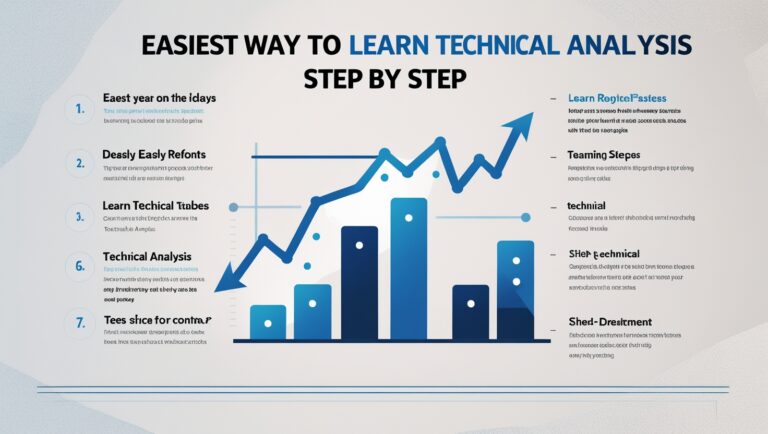How to Analyze Market Volatility Indicators (VIX, ATR, etc.)
How to Analyze Market Volatility Indicators (VIX, ATR, etc.)
Learn how to analyze market volatility indicators like the VIX and ATR to make smarter trading decisions. I share my personal approach, tips, and how I integrate these tools into my investing strategy.

Table of Contents
What Is Market Volatility?
Market volatility measures how much a security or index fluctuates over time. High volatility usually signals greater risk but also potential opportunities.
I pay close attention to volatility because it helps me adjust risk, plan trades, and identify opportunities. Ignoring volatility can lead to unexpected losses, especially in uncertain markets.
Key Volatility Indicators I Use
VIX (Volatility Index)
The VIX tracks the expected volatility of the S&P 500 over the next 30 days. I use it as a fear gauge—when VIX is high, the market anticipates large moves, and I may reduce exposure or tighten stop-losses.
ATR (Average True Range)
ATR measures the average movement of a stock over a period, helping me gauge intraday or daily volatility. It’s particularly useful when setting stop-loss or limit orders to avoid being triggered by normal price swings.
Beta
I look at beta to understand how a stock moves relative to the market. High-beta stocks swing more aggressively, so I adjust position sizes and risk management accordingly.
How I Apply These Indicators
I combine volatility indicators with my trading strategy. For example:
- When VIX spikes, I may focus on defensive stocks or ETFs.
- I use ATR to set realistic stop-loss levels, preventing premature exits.
- Beta helps me diversify by balancing high- and low-volatility assets.
This approach keeps me aligned with market conditions while managing risk.
Benefits I’ve Experienced
- Better risk management: Knowing when the market is volatile helps me protect capital.
- Smarter entries and exits: Volatility indicators guide my stop-loss and limit order placement.
- Portfolio balance: I can mix high- and low-volatility investments based on market conditions.
I’ve learned that combining these indicators prevents emotional trading during spikes and dips.
Common Mistakes I Avoid
- Relying on a single indicator without context
- Ignoring market trends while focusing only on volatility
- Setting stops too tight in high-volatility environments
- Using beta without considering correlation to other portfolio assets
Avoiding these mistakes keeps my trades strategic rather than reactive.
Integrating With My Investment Strategy
I use volatility indicators across stocks, ETFs, and options. They help me identify opportunities, protect profits, and adjust my exposure according to market conditions.
By integrating VIX, ATR, and beta with fundamental analysis and portfolio allocation, I maintain a balanced and disciplined approach.
Tools I Use
I rely on platforms that provide real-time volatility metrics, charts, and historical data. This helps me analyze trends, identify spikes, and make informed decisions without second-guessing.
I also set up alerts for sudden VIX moves or abnormal ATR changes, which gives me time to respond strategically rather than emotionally.
Real-Life Example
Last quarter, VIX spiked due to geopolitical news. I adjusted my stop-loss levels using ATR and reduced exposure in high-beta stocks. This helped me protect gains while staying invested in core positions.
It reinforced that understanding volatility indicators allows me to manage risk and capitalize on opportunities simultaneously.
Want My Full Market Strategy?
If you want to see exactly how I use volatility indicators like VIX, ATR, and beta to trade effectively and grow wealth, I share my full system in my ebook: Pay Bills with Stocks.
I explain step by step how I combine volatility analysis with stop-loss strategies, position sizing, and automated investing to make smarter decisions.
Final Thoughts
Market volatility can be intimidating, but with the right indicators, I’ve learned to turn it into actionable insights. Using VIX, ATR, and beta consistently has improved my risk management, trading precision, and portfolio performance.
For a detailed guide on incorporating volatility analysis into your investment strategy, check out my ebook: Pay Bills with Stocks.
One of the first things I realized is that volatility isn’t inherently bad—it’s a tool. By understanding VIX, ATR, and beta, I can make more informed trading and investment decisions.
I often use VIX spikes as a signal to review my portfolio. When the market anticipates turbulence, I check my positions, tighten stops, or reduce exposure in high-risk assets.
ATR helps me set realistic stop-loss and take-profit levels. Without it, normal price fluctuations can trigger exits unnecessarily, which would hurt my overall returns.
Beta informs me about how individual stocks move relative to the broader market. I use this to balance risk—high-beta stocks offer bigger gains but more swings, so I size positions carefully.
I also combine volatility analysis with fundamental research. Even if a stock is volatile, strong fundamentals make me more confident holding through swings.
Automation plays a big role in my strategy. I set alerts for unusual ATR activity or VIX spikes, which allows me to react strategically rather than emotionally.
I’ve learned to avoid reacting to every market blip. Volatility indicators are tools for analysis, not triggers for panic. They help me maintain discipline and focus on long-term goals.
I sometimes use volatility metrics for position sizing. High-volatility assets get smaller allocations, while low-volatility holdings can carry larger weights, keeping my risk profile balanced.
Tracking historical volatility also helps. I compare current ATR and VIX readings to past periods, which guides me in anticipating potential market movements.
I integrate volatility indicators with diversification strategies. By blending high- and low-volatility assets, I maintain portfolio stability while taking advantage of opportunities.
Even short-term traders benefit. I use ATR for intraday decision-making, adjusting stops dynamically to reflect market conditions rather than fixed percentages.
I also pay attention to sector-specific volatility. Certain industries, like tech or biotech, naturally swing more, so I adjust my strategies accordingly.
Behavioral discipline is crucial. Volatility analysis prevents me from making emotion-driven trades during market spikes or drops, which could otherwise undermine long-term growth.
I regularly review my portfolio correlations alongside beta. Understanding how assets move together allows me to reduce systemic risk while taking advantage of volatility opportunities.
Finally, if you want to see exactly how I analyze market volatility, set strategic stops, and grow my portfolio, I share my full system in my ebook: Pay Bills with Stocks. It’s the exact method I use to trade confidently, manage risk, and maximize returns.

Stay ahead in the stock market! Subscribe to our newsletter and receive exclusive stock flow reports, trading insights, and actionable tips directly in your inbox. Join thousands of traders who get our updates first.







